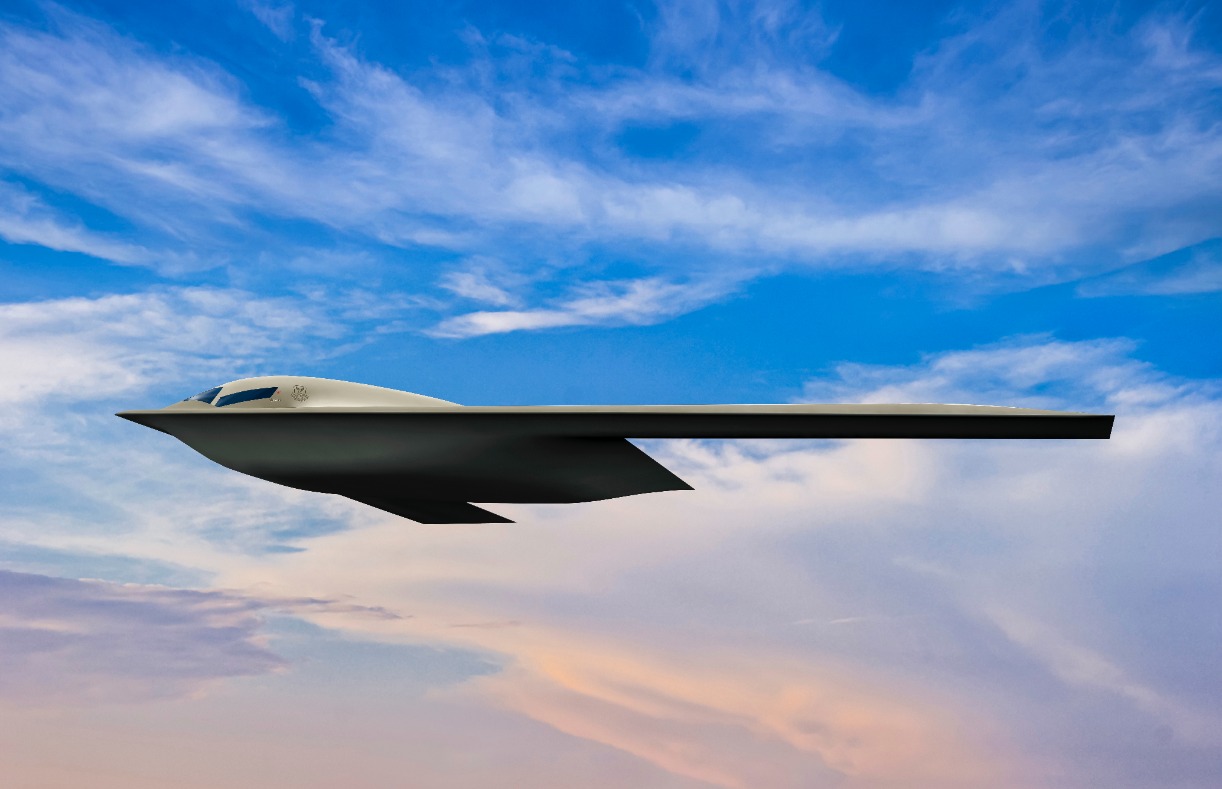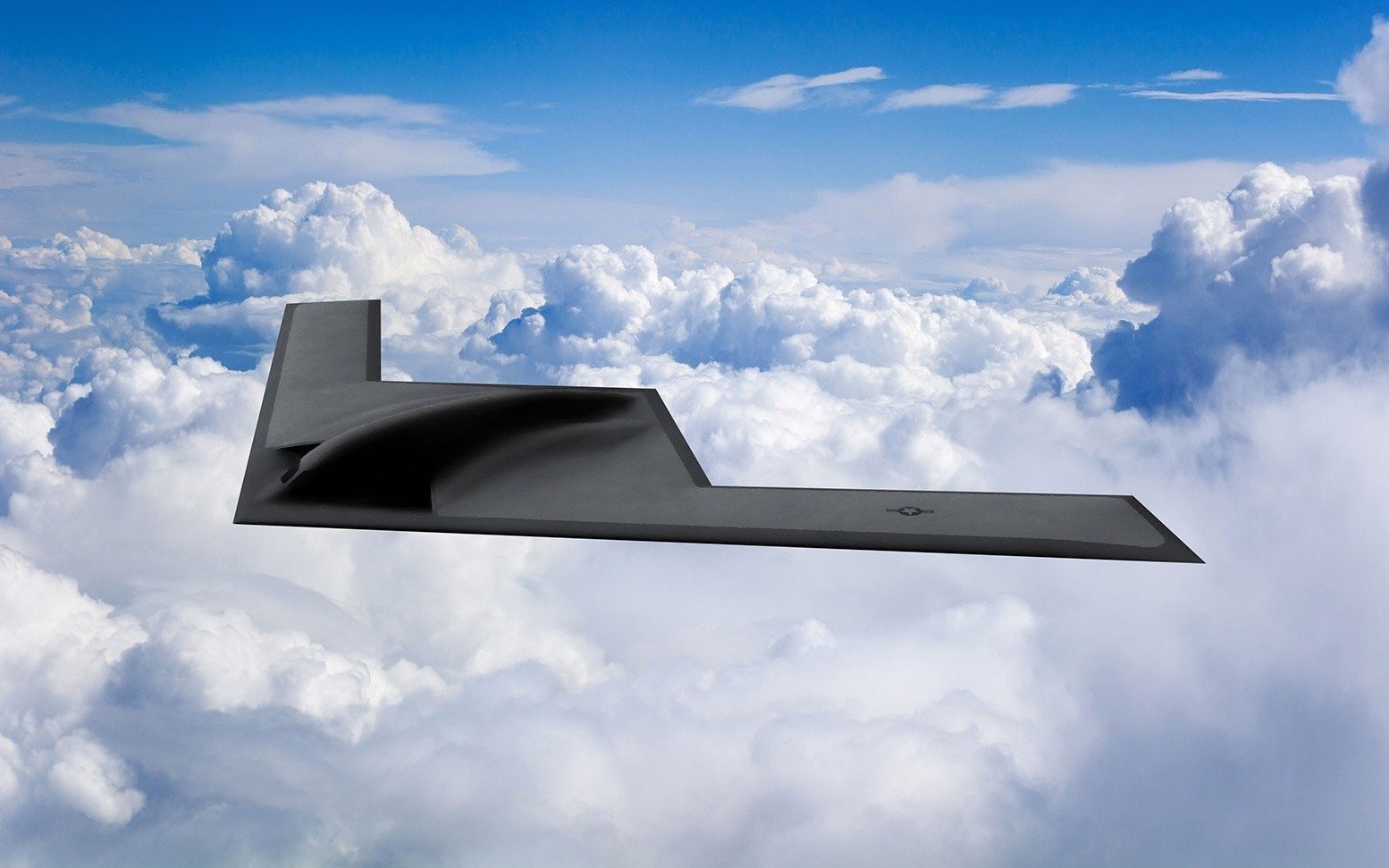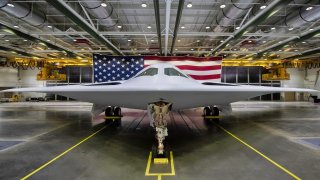B-21 Raider Bomber: The 'Achilles Heel' No One Is Thinking About
The B-21 Raider is the most advanced long-range stealth bomber globally, crucial for restoring U.S. deterrence against China and Russia.
Summary and Key Points: The B-21 Raider is the most advanced long-range stealth bomber globally, crucial for restoring U.S. deterrence against China and Russia.

-However, America’s current industrial capabilities and reliance on materials from China pose significant challenges.
-The U.S. Air Force needs 300 B-21 units but is slated to receive only 150 over the next decade, costing $600 million each. Given potential economic constraints, prioritizing the B-21 is critical, yet alternative solutions like stealth drone swarms might be more feasible.
-These drones could support fifth-generation fighters like the F-22 and F-35, offering a cost-effective way to maintain air superiority and meet future combat demands.
Stealth Drones vs. B-21 Raider: Exploring Affordable Alternatives for U.S. Air Dominance
The B-21 Raider is the Air Force’s newest long-range stealth bomber. It’s undoubtedly the most advanced bomber in the world. If it could be produced to the level that the Air Force (quickly) needs them to be produced at, the United States would have likely restored a key element of its failing deterrence against China and Russia.
But America’s industrial strength today is a fraction of what it was in the Second World War. In fact, our defense industrial supply chain sources many of its materials from China.
Between that and the broken nature of the US defense industrial base, these planes won’t be available in any meaningful number anytime soon.
Anyway, the Air Force needs at least 300 units of the B-21.
They’re slated to receive only 150 units over the next decade. At $600 million per unit, it seems unlikely that the Air Force will ever get its desired number of 300 units—let alone 150. They’ll probably get a few to a dozen aircraft in this model over 15 years (and with serious cost overruns and additional delays).
Will it be worth the cost?
The B-21 is Being Given the Short Shrift
These are the questions that military planners must now ask themselves as we stare down the face of a massive debt crisis and likely recession. Unlike 2008, there will be no bailouts to be had, meaning that when the crisis hits the wider economy it will be felt for the duration of the crisis. The military will be impacted along with the rest of the country.
Personally, I think the Air Force should prioritize this plane over almost all of its other considerations. Having 300 of these birds soon would truly deter America’s rivals. But if the Air Force cannot—and Congress won’t allow for them to—build requisite numbers of these birds, the Air Force might want to consider canceling the project now and working its lessons learned into something more affordable.
Drone swarms are a critical feature of any future combat planning. Yet, the United States is still working on this in the concept phase. If the Air Force cannot get the number of B-21s it wants and needs to achieve a deterrent effect, then it is necessary to look at other, cheaper modalities.
Again, the B-21 is the best vehicle for restoring deterrence but if it’s too expensive and if the Air Force won’t prioritize it, then we need something else.
The Air Force is already working on advanced drones, such as the Collaborative Combat Aircraft (CCA) concept that Kratos is building (the XQ-58 Valkyrie). These drones will support the mission sets of America’s fifth-generation warplanes, the F-22A Raptor and the F-35 Lightning. The XQ-58 costs anywhere between $20.5 and $27.5 million per unit (significantly cheaper than the B-21).
Creating stealth drones that are capable of swarming would be more expensive, though still less than the B-21 Raider costs.
A More Economical Solution
Building off the Air Force’s CCA concept, stealth drones could be deployed from F-22 or F-35 “motherships.” From there, these drones, armed with advanced propulsion and, eventually, artificial intelligence (AI), will augment existing air capabilities. The stealth drone swarms, at least in theory, would deliver the same kind of firepower over distant targets that the B-21 Raiders can—but at lower costs and with no direct danger to American pilots.
Plus, building an entirely new generation of drones that are stealth capable, longer-range, and can swarm will help keep the amazing F-22A Raptor relevant (the Air Force idiotically wants to retire this great plane to make way for its ghastly sixth-generation warplane boondoggle).
Time is of the essence.
The world is speeding towards even greater geopolitical problems in which every technological asset that America can bring to bear will be required. Right now, the United States is going to lose that war. It needs to significantly—fundamentally—change things up. Before it’s too late.

Stealthy drone swarms married to America’s fifth-generation warplane fleet is the surefire answer.
Author Experience and Expertise: Brandon J. Weichert
Brandon J. Weichert, a National Interest national security analyst, is a former Congressional staffer and geopolitical analyst who is a contributor at The Washington Times, the Asia Times, and The-Pipeline. He is the author of Winning Space: How America Remains a Superpower, Biohacked: China’s Race to Control Life, and The Shadow War: Iran’s Quest for Supremacy. His next book, A Disaster of Our Own Making: How the West Lost Ukraine, is due October 22 from Encounter Books. Weichert can be followed via Twitter @WeTheBrandon.
All images are Creative Commons or Shutterstock.
From the Vault
Russia Freaked Out: Why the U.S. Navy 'Unretired' the Iowa-Class Battleships
Battleship vs. Battlecruiser: Iowa-Class vs. Russia's Kirov-Class (Who Wins?)


